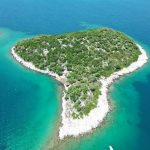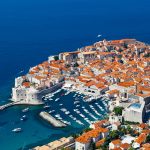As Novac writes on the 12th of July, 2019, at the Croatian Chamber of Commerce (HGK), a session of the Tourist business council was held, discussing the current season’s situation with tourism and what the expectations for the end of 2019 are.
After several years of growth at unrealistically high rates caused by external factors, the Croatian tourist season of 2019 has so far seen a slight stagnation and a decline that will be felt the most in private accommodation, although the Croatian National Tourist Board’s data for the first six months oddly shows the opposite.
”We have to prepare ourselves well for these new circumstances and be prepared to have to fight for each and every guest,” said Franco Palma at the Croatian Chamber of Commerce.
Igor Borojević, head of the Croatian National Tourist Board’s market strategy department, attempted to defend the situation and claimed that these rather unimpressive figures for summer 2019 represent only a third of the arrivals, or a quarter of the realised overnight stays, and when it comes to the full season’s evaluation, July and August will be crucial, the two months during which Croatia typically realises half of its annual indicators.
Croatian bed capacity increased by four percent, primarily in private accommodation, but when it comes to occupancy, the rates appear to be relatively low. In the last three years, Croatia has got 165,000 new beds, of which 154,000 are in private accommodation facilities, while there has only been very modest growth in the country’s hotel accommodation.
”Despite this, hotels have remained the carriers of Croatian tourist traffic during the first half of the year, accounting for 50 percent of arrivals and 39 percent of overnight stays,” Borojević claimed, adding that 2/3 of the major emission markets grew.
High growth rates have also been achieved with some long-haul markets from outside of Europe, such as from the United States of America, with a 13.7 percent increase, a 41 percent increase has been experienced from China, and a significant 53 percent increase has been seen from Taiwan. The market share in the first half of the year has a 20 percent share in total arrivals and a 10 percent share in overnight stays, with over 80 new airline lines contributing to it.
The Croatian National Tourist Board’s figures show that during the first six months of this year, Croatia recorded growth of 6 percent, saw 6.8 million arrivals and 26.2 million overnight stays, marking an increase of 3 percent. This is, apparently, a great achievement with regard to what is frequently being referred to as a very challenging tourist year, accompanied by the recovery of Croatia’s traditional competitive markets such as Turkey.
”This points to the strengthening of the Croatian tourist offer during the pre-season,” noted Dragan Kovačević.
Istria, Kvarner and Split-Dalmatia County are the top destinations, while Dubrovnik, Rovinj and the Croatian capital of Zagreb remain the most visited cities in the country.
Croatian hotels, especially those of a higher category, are expected continue to grow slightly, although prices are 10 to 30 percent more expensive than in Europe’s long-time tourism experts, such as Spain and Greece, which could easily push Croatia down in the future.
Make sure to follow our dedicated lifestyle and travel pages for much more.








